Virtual Desktop Infrastructure (VDI), as well as session-based virtual apps and desktops, has become an essential technology for organizations looking to enable secure, flexible, and scalable remote work environments. By centralizing desktops and applications, virtual desktop solutions offer a powerful way to manage end-user computing, reduce hardware costs, and enhance security.
It is never too early to start planning for your next budget year. Changing virtual desktop providers can be a big step, depending on the size of your organization, and it requires planning. Some solutions have easier migrations than others. With rapid changes in the past two years at the two dominant companies, this has left a lot of users looking for Citrix alternatives or alternatives to VMware Horizon. While these two companies still dominate the space, there are a number of excellent options ready to step up and act as a replacement.
Choosing the right desktop virtualization solution or DaaS (Desktop-as-a-Service) solution is a critical business decision. Below is a look at some of the top virtual desktop software choices.
1. VMware Horizon:
VMware Horizon (now called Omnissa Horizon after being sold by VMware Broadcom) is a market leader known for its robust and feature-rich VDI solution. It offers a powerful ecosystem for delivering virtual desktops and published applications across various devices.
- Pros: Deep integration with existing VMware infrastructure (vSphere, vSAN), high-performance display protocol (Blast Extreme), and advanced management features like instant clones and application layering.
- Cons: Can be expensive and complex, particularly for smaller organizations. The deep integration above means that you are locked in with the VMware Broadcom hypervisor and the price increases that seem to be squeezing small and mid-sized businesses. VMware also terminated many smaller partners, meaning that familiar local experts may no longer be available to you as they seek new partners. The licensing model can be difficult to navigate, and the setup and ongoing management may require specialized IT expertise.
2. Citrix DaaS:
Citrix is a long-standing pioneer in the desktop virtualization software space, and its DaaS (Desktop-as-a-Service) solution is a top choice for demanding enterprise environments. It’s known for its powerful HDX protocol, which provides an excellent user experience over various network conditions.
- Pros: Superior performance and security, especially for high-latency networks. Offers extensive customization and control for complex deployments, with broad support for a wide range of endpoints and peripherals.
- Cons: Notoriously complex to architect and manage, which can lead to a steep learning curve and higher administrative overhead. And equally, it is notoriously costly. The licensing can be complex, making it less suitable for small to medium-sized businesses or for businesses with seasonal or multiple shifts where a concurrent licensing model might be more convenient. After a recent purchase of the company, Citrix has begun to focus only on its largest enterprise customers and has shifted support to third-party distributors and dramatically raised prices.
3. Microsoft Azure Virtual Desktop (AVD):
Azure Virtual Desktop is a cloud-native DaaS solution that integrates seamlessly with the Microsoft ecosystem.
- Pros: While it may be cost-effective for organizations already using Microsoft 365 or Azure, for those not wanting to be on Azure, it is not a choice. It has simplified management via the Azure portal and powerful automation capabilities. The multi-session feature allows for higher user density on a single VM.
- Cons: Can be challenging for organizations without a strong Azure or cloud background. Azure costs are notoriously unpredictable and, without careful monitoring, or the additional cost of adding a product like Nerdio on top, the costs can far exceed your budget. Performance is heavily reliant on a stable internet connection.
4. Inuvika OVD Enterprise:
Inuvika OVD Enterprise is a powerful and cost-effective virtual desktop solution. It stands out by leveraging a Linux-based architecture to deliver both Windows and Linux apps and desktops.
- Pros: Significantly reduces total cost of ownership (TCO) by up to 60% vs Citrix or VMware and minimizes the need for some expensive Microsoft Windows Server and SQL Server licenses. Single, easy-to-use admin platform. The platform is known for its ease of use and streamlined administration. It also claims to install in hours vs. days for others. It has its own multi-factor authentication and premium USB redirection included in the price. It offers easy multi-tenancy for MSPs and CSPs
- Cons: The community and third-party support ecosystem may not be as extensive as those for the larger market leaders, but it exists and is growing. Only Red Hat and Ubuntu are currently supported in Linux.
5. Parallels RAS (Remote Application Server):
Parallels RAS is an all-in-one solution for delivering virtual applications and desktops. It is a cost-effective alternative to Citrix and VMware, the enterprise giants.
- Pros: It has a straightforward licensing model and supports a variety of on-premises and cloud infrastructures. Offers built-in load balancing and comprehensive reporting.
- Cons: While feature-rich, it may not have the same depth or specialized capabilities as larger platforms like Citrix or VMware for highly complex or large-scale deployments. Some users have reported minor stability issues. Some users have expressed frustration with the support process, specifically noting that support is heavily reliant on email communication and sharing log files. This can prolong the troubleshooting process.
6. TSplus:
TSplus is a simple, affordable, and quick-to-deploy solution for enabling remote access to Windows applications and desktops. It is particularly popular with small businesses and individuals due to its low barrier to entry.
- Pros: Extremely affordable and simple to set up, often taking just a few minutes. Offers a straightforward approach to remote access without the complexity of traditional VDI. It supports a wide range of Windows OS versions and provides a suite of security add-ons.
- Cons: Lacks the advanced management, scalability, and security features of enterprise-grade VDI solutions. It’s built on top of RDP, which can expose security risks if not properly configured with a secure gateway or VPN. It’s not designed for high-performance or graphic-intensive workloads. No Linux support. There is an open debate on whether RDS CALs are required or not. If worried about a potential Microsoft audit, this may not be a good option.
7. Amazon WorkSpaces:
Amazon WorkSpaces is a fully managed Desktop-as-a-Service (DaaS) solution from AWS. It provides a simple, scalable way to provision a virtual desktop solution in the cloud with minimal administrative effort.
- Pros: Very easy to deploy and manage, as AWS handles the underlying infrastructure. Offers a variety of desktop bundles to meet different performance needs. Its pay-as-you-go pricing can be very flexible for organizations with fluctuating user counts.
- Cons: The consumption-based pricing can become very expensive and difficult to predict for consistent, heavy usage. Some users have reported latency issues, and performance is highly dependent on a strong internet connection. It provides less customization and control compared to VDI solutions you manage yourself.
Comparison Table:
| Merkmal | VMware Horizon | Citrix DaaS | Microsoft AVD | Parallels RAS | Inuvika OVD Enterprise | TSplus | Amazon WorkSpaces |
| Primary Focus | Enterprise VDI | Enterprise VDI & DaaS | Cloud-native VDI | All-in-one Simplicity | EnterpriseVDI & DaaS, TCO | Affordable Remote Access | Managed DaaS |
| Key Pros | Feature depth, Ecosystem Integration | Performance (HDX), Security, Flexibility | Cost-effective, Microsoft Integration | Simplicity, Cost-effective, All-in-one | Reduced TCO, Linux-based | Ease of use, Pricing | Fully managed, Scalability |
| Potential Cons | High cost, Complex to manage | High complexity & cost, Steep learning curve | Requires Azure knowledge, Unpredictable costs | Lacks enterprise depth, RDP-based protocol | Smaller support community | Lacks enterprise features, RDP-based security risks | Unpredictable costs, Less customization |
| Deployment | On-prem, Cloud, Hybrid | Cloud (Control Plane), Hybrid | Cloud (Azure) | On-prem, Cloud, Hybrid | On-prem, Cloud, Hybrid | On-prem, | Cloud (AWS) |
FAQ’s
1. What is a virtual desktop? 🖥️
- A virtual desktop is a desktop environment hosted on a centralized server rather than a physical computer. It allows users to access their applications, files, and data from any device, anywhere, with an internet connection.
2. What’s the difference between VDI and DaaS? ☁️
- Virtual Desktop Infrastructure (VDI) is an on-premise solution where an organization hosts and manages its own virtual desktop solution, including the servers, storage, and networking. This provides maximum control but requires a significant upfront investment and dedicated IT staff.
- Desktop as a Service (DaaS) is a cloud-based service where a third-party provider hosts and manages the virtual desktop infrastructure. It’s a subscription-based model that eliminates the need for a large initial investment and reduces the management burden on the company’s IT team.
3. Who are virtual desktops solutions best for?
- They are ideal for organizations with remote or hybrid workforces, businesses that handle sensitive data and need enhanced security, and companies with a large number of temporary or contract workers.
4. How do virtual desktops solutions improve security? 🛡️
- Since all data and applications are stored on a centralized server, sensitive information is never saved on local devices. This significantly reduces the risk of data loss from stolen or compromised devices, and simplifies security management and patching.
5. How does a virtual desktop solution save money?
- A virtual desktop can reduce hardware costs by allowing companies to use less expensive devices (e.g., thin clients) since the heavy processing is done on the server. It can also reduce IT management costs by simplifying updates and maintenance for all users at once. But some solutions are far more expensive than others and saving money may not be of primary importance in all situations, especially where security is concerned.
Implementation and Technical FAQs
What are the key factors to consider when choosing a virtual desktop solution?
- Consider your business’s size and specific needs. Key factors include performance (e.g., for graphics-intensive applications), scalability (how easily you can add or remove users), Sicherheit features, ease of use, and cost.
What are the different pricing models for virtual desktop solutions? 💰
- Pricing can be based on a fixed monthly fee per user, hourly consumption, or a combination of both. Some providers also offer different tiers based on the level of computing power (e.g., standard vs. power users). Concurrent vs named user licensing can be the greatest difference when choosing one virtual desktop provider over another.
What kind of internet connection do I need?
- A reliable, high-speed internet connection is crucial for a smooth user experience. The exact bandwidth needed depends on the type of work being done, but a stable connection is more important than raw speed.
Can I use my existing applications and software?
- Most virtual desktop solutions support a wide range of applications, but it is important to confirm compatibility, especially for custom or highly specialized software.
What is a persistent vs. non-persistent virtual desktop?
- A persistent desktop is dedicated to a single user, allowing them to personalize it and save their changes. It’s like having your own physical computer.
- A non-persistent desktop is a temporary, shared resource. Each time a user logs in, they get a fresh, clean desktop, and any changes are erased when they log out. This model is more cost-effective for large groups of task-based users.

